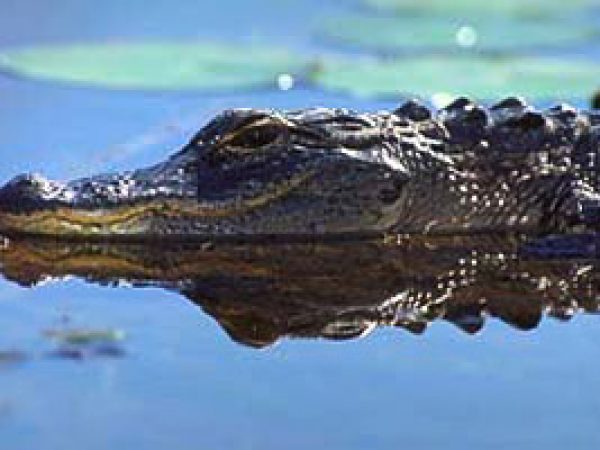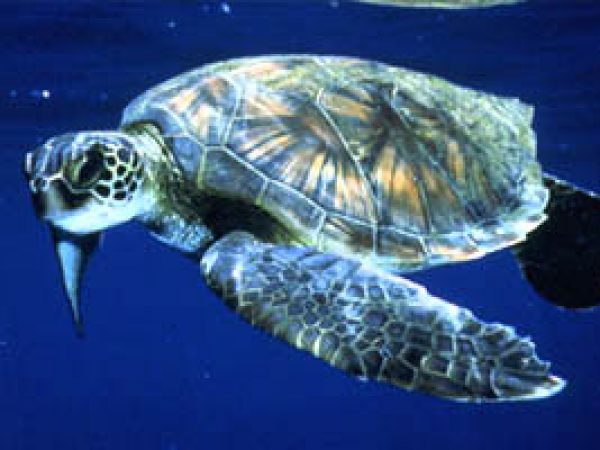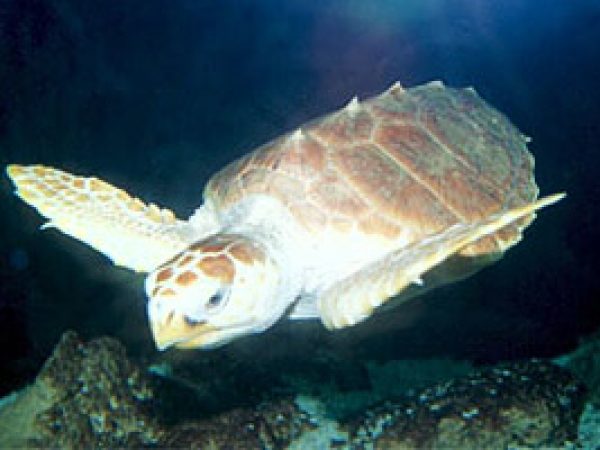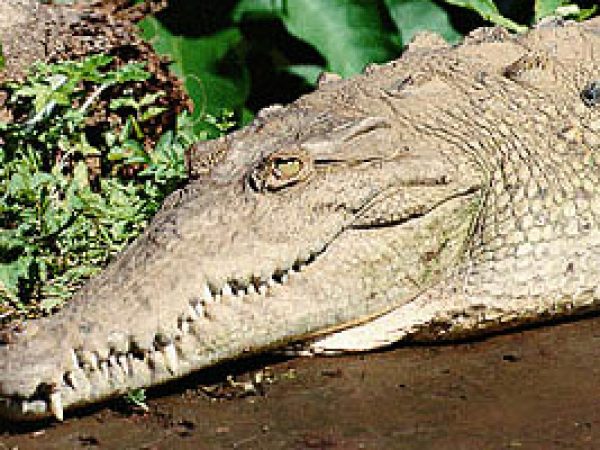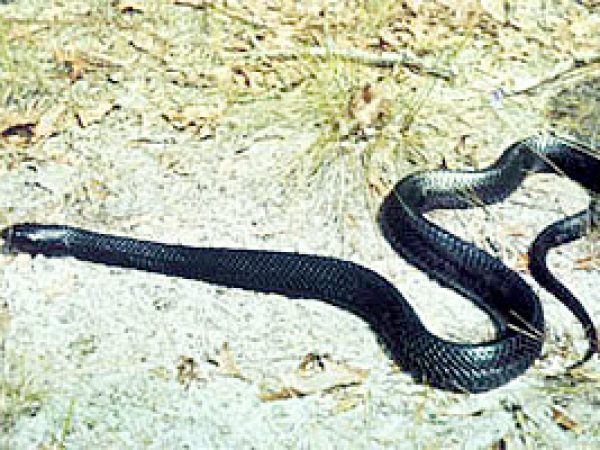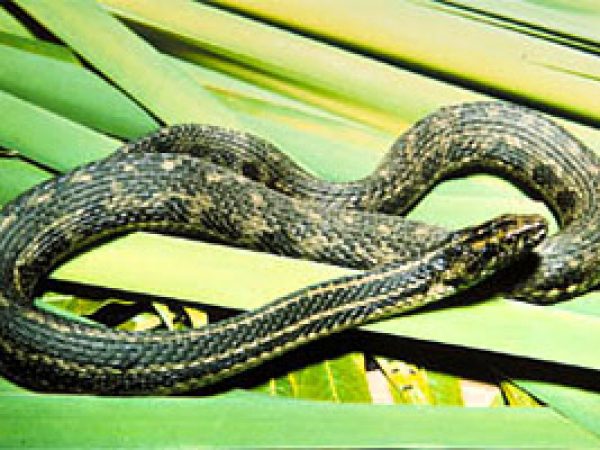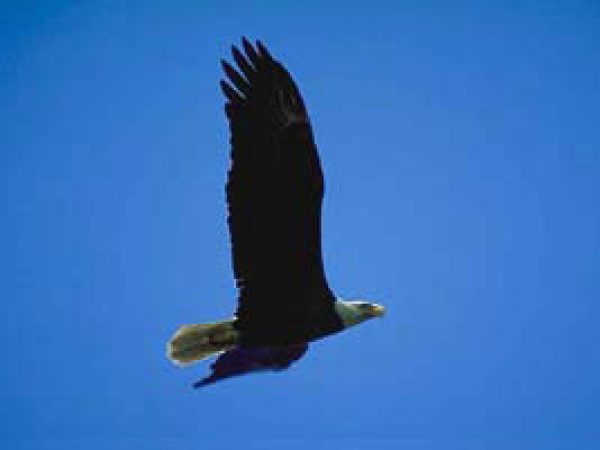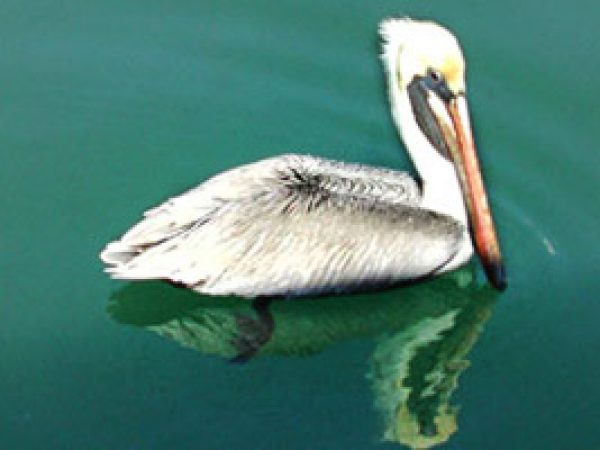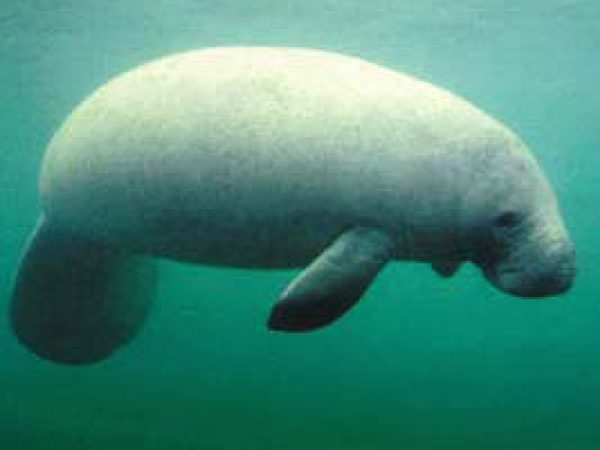Shoreline Protection
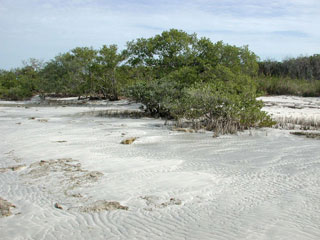
Mangroves protect shorelines from erosion.
Mangroves protect shorelines from damaging storm and hurricane winds, waves, and floods. Mangroves also help prevent erosion by stabilizing sediments with their tangled root systems. They maintain water quality and clarity, filtering pollutants and trapping sediments originating from land.
Nursery
Mangroves serve as valuable nursery areas for fish and invertebrates.
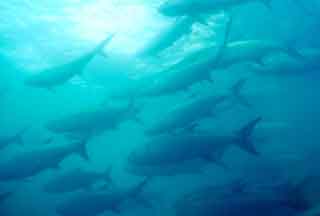
Serving as valuable nursery areas for shrimp, crustaceans, mollusks, and fishes, mangroves are a critical component of Florida’s commercial and recreational fishing industries. These habitats provide a rich source of food while also offering refuge from predation. Snook (Centropomus undecimalis), gray snapper (Lutjanus griseus), tarpon (Megalops atlanticus), jack (Caranx spp.), sheepshead (Archosargus probatocephalus), and red drum (Sciaenops ocellatus) all feed in the mangroves. Florida’s fisheries would suffer a dramatic decline without access to healthy mangrove habitats.
Threatened and Endangered Species
Mangroves Support Threatened and Endangered Species.
In addition to commercially important species, mangroves also support a number of threatened and endangered species.
Threatened species include:
 American alligator (Alligator mississippiensis). Photo courtesy South Florida Water Management District
American alligator (Alligator mississippiensis). Photo courtesy South Florida Water Management District Green sea turtle (Chelonia mydas). Photo courtesy U.S. Fish and Wildlife Service
Green sea turtle (Chelonia mydas). Photo courtesy U.S. Fish and Wildlife Service Loggerhead sea turtle (Caretta caretta). Photo © John White
Loggerhead sea turtle (Caretta caretta). Photo © John White
Endangered species include:
 American crocodile (Crocodylus acutus). Photo courtesy U.S. Fish and Wildlife Service
American crocodile (Crocodylus acutus). Photo courtesy U.S. Fish and Wildlife Service Hawksbill sea turtle (Eretmochelys imbricata). Photo courtesy NOAA
Hawksbill sea turtle (Eretmochelys imbricata). Photo courtesy NOAA Eastern indigo snake (Drymarchon corais). Photo courtesy U.S. Fish and Wildlife Service
Eastern indigo snake (Drymarchon corais). Photo courtesy U.S. Fish and Wildlife Service Atlantic saltmarsh snake (Nerodia clarkii taeniata). Photo courtesy U.S. Fish and Wildlife Service
Atlantic saltmarsh snake (Nerodia clarkii taeniata). Photo courtesy U.S. Fish and Wildlife Service Southern bald eagle (Haliaeetus leucocephalus leucocephalus). Photo courtesy South Florida Water Management District
Southern bald eagle (Haliaeetus leucocephalus leucocephalus). Photo courtesy South Florida Water Management District Peregrine falcon (Falco columbarius). Photo courtesy South Florida Water Management District
Peregrine falcon (Falco columbarius). Photo courtesy South Florida Water Management District Brown pelican (Pelicanus occidentalis). Photo © Cathleen Bester / Florida Museum
Brown pelican (Pelicanus occidentalis). Photo © Cathleen Bester / Florida Museum West Indian manatee (Trichechus manatus). Photo courtesy U.S. Geological Survey
West Indian manatee (Trichechus manatus). Photo courtesy U.S. Geological Survey
- Atlantic ridley sea turtle (Lepidochelys kempii)
- Barbados yellow warbler (Dendroica petechia petechia)
- key deer (Odocoileus virginianus clavium)

These species utilize mangrove systems during at least some portion of their life histories, while others reside their entire life spans, feeding and nesting within the mangroves.
Renewable Resource
Mangroves are utilized in many parts of the world as a renewable resource.
In other parts of the world, people have utilized mangrove trees as a renewable resource. Harvested for durable, water-resistant wood, mangroves have been used in building houses, boats, pilings, and furniture. The wood of the black mangrove and buttonwood trees has also been utilized in the production of charcoal. Tannins and other dyes are extracted from mangrove bark. Leaves have been used in tea, medicine, livestock feed, and as a substitute for tobacco for smoking. In Florida, beekeepers have set up their hives close to mangroves in order to use the nectar in honey production.
Glossary terms on page:
- erosion: the wearing away of soil, rock, and sediments, etc. by the action of wind, rain, and other weather-related elements.
- endangered species: a species in danger of becoming extinct that is protected by the Endangered Species Act.
- threatened species: plants or animals likely to become endangered in the near future.
